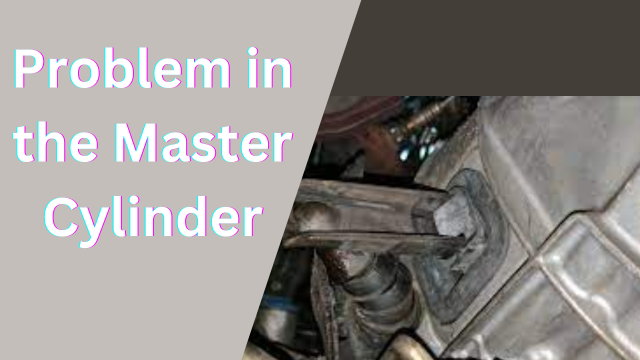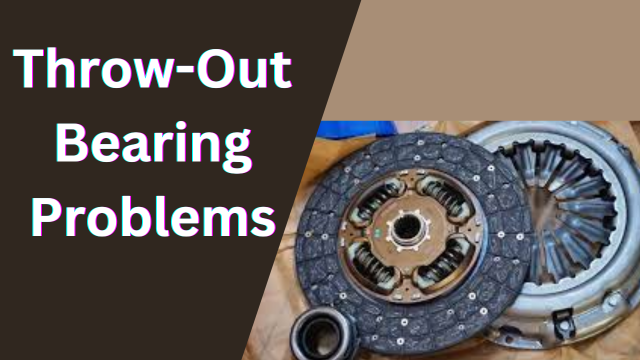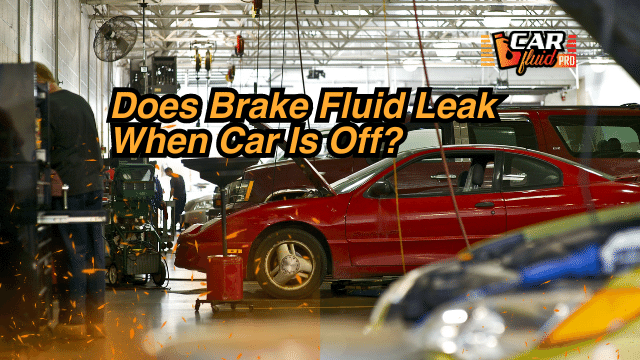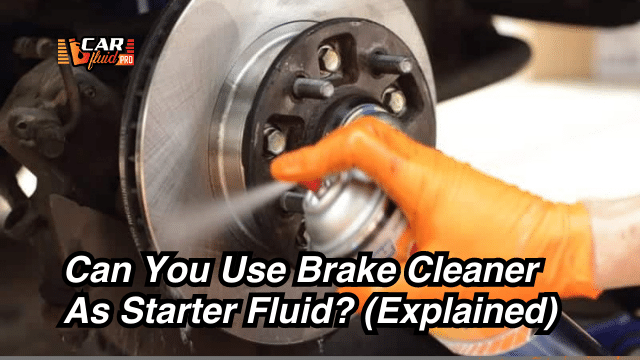Why No Pressure in Clutch After Bleeding the System?(Fixed)
When you bleed the clutch system properly, it definitely works better. But it is often seen that there is no pressure in the clutch after bleeding. Why is that?
Well, the most common reason is that the clutch wasn’t bled accurately or that there are problems in the other clutch components.
In this article, you’ll learn the causes about why there is no clutch pressure after bleeding and also discuss their solutions. Then I’ll also show you the signs of when to replace the clutch. I’ll wrap things up by showing you how to bleed the clutch fluid properly.
4 Major Cases and Solutions for No Pressure in Clutch After Bleeding
The clutch fluid often catches air in it. And when it happens, clutch performance drops massively. It negatively affects,that is when we need to bleed the clutch system to remove the air.
There could be a few reasons why you aren’t feeling any pressure on the clutch pedal. However, the most common ones are shown below with a way to fix them. Follow the solutions, and I believe you’ll be able to solve them easily.

1. Incorrect Bleeding

This is one of the most common reasons. Many of us do not know the proper way to bleed the clutch.
And when we make even the smallest mistakes in this process, air gets stuck in the system.
It can occur when you are replacing different components of the clutch.
Some people do not use a helping hand while bleeding the clutch. They take time while doing it, and air can get into the system easily. I hope you don’t do that.
Yes, you can use a bleeder ball and do the task all by yourself. But it’s always better to get some help from someone.
Again, once I saw one of my friends use the wrong kind of bleeder screw, it definitely didn’t work in the best possible way, and of course, air got trapped.
There can be other reasons as well. If you make a mistake while pumping the pedal, air can also enter the system. If the clutch slave cylinder is bled upside down, then you won’t get any pressure either.
Solution
The solution is simple. You have to bleed the clutch properly.
There are numerous methods for bleeding the clutch.I’ve shown you two step-by-step procedures for bleeding the clutch fluid in the sections below.Follow them accurately, and you’ll be good to go.
However, there are some things you’ll always have to keep in mind. Such as:
- Close the bleeder valve quickly if you think you’ve gotten all the air out.
- Replace the components properly and use a good bleeder screw.
- Don’t bleed your clutch unnecessarily. Only do it when you really have to.
- Pump up the clutch pedal properly.
2. Slave Cylinder Not working

I faced this problem twice. You might have a weak slave cylinder. And it may be the reason that your clutch has no pressure.
There might be a leak in the slave cylinder. Thinking about what happens then? It prevents the cylinder from getting enough fluid. And in the end, you won’t be getting any pressure in the clutch.
Solution:
You can perform the followings steps to solve the problems that is no pressure in clutch after bleeding:
- Change the entire slave cylinder.
- Replace the flexible bits.
- Remove every dirt you can from the system.
3. Problem in the Master Cylinder

Another reason could be that there are problems in the master cylinder. It is a really valuable part of the entire clutch system.
A master cylinder helps in converting the force into hydraulic pressure. It is connected to the clutch pedal directly with a pin.
So, if you have any kind of problem with the master cylinder, such as leakage problems, then you have a lot to worry about.
Also, the master cylinder’s reservoir might have a shortage of fluid. If this happens, then the clutch pedal won’t be able to return up.
Solution:
Here’s a quick solution. Try to fill up the reservoir of the master cylinder with brake fluid.
4. Throw-Out Bearing Problems

What’s a throw-out bearing?
It is a necessary part of the clutch that helps to disengage the car’s engine temporarily. If you have a problem with it, the clutch won’t function properly.
Here’s how you can identify that there’s a problem with the throw-out bearing:
- When you press down on the clutch pedal, you will get a stiff feeling.
- Hear strange kinds of noises while pressing down the clutch pedal.
- Face difficulty while shifting gears
- An entire clutch failure
If you face any of the top symptoms, then you have to fix it as soon as possible. Remember, the longer you face the throw-out bearing problem, the more serious it gets for you.
Solution:
You should replace the bearings that are causing trouble. Also, try to perform some routine maintenance to avoid it in the first place.
Hope the solutions seem easy to you and you’ll be able to pull it off. If you’re getting no pressure in clutch after bleeding, find out the reason and solve it ASAP.
5 Signs that Your Clutch Needs Replacement
The clutch is a necessary component of the car. If there are problems in it, then you won’t be able to drive the car. Here are some signs that will show you that the clutch needs replacement:
1. Poor Acceleration
You’ll continuously get poor acceleration while driving the car.
If you have a good habit of driving, you’ll be able to notice it. When I had problems with my honda clutch, I found it tough to rev up the engine.
The speed of the engine wasn’t increasing as it was supposed to.
So, it’s a big warning sign that the clutch needs replacement.
2. Grumbling Noise
When you press the clutch pedal, you’ll hear a grumbling noise. It is irritating and frustrating. So, replace your clutch when you hear something like this.
3. Hard to Shift Gears
This ones an obvious one. You’ll be facing troubles and find it really difficult while shifting the gears.
4. Spongy Clutch Pedal
When you press the clutch pedal, you will find it loose. It can be a bit spongy or vibrating.
5. Clutch Pedal stays on the Floor
Another symptom is that the clutch pedal will stick to the ground.
But hey,don’t replace your clutch right away. If you face this sign, then there might be a problem with the hydraulic system. Try to check it first.
How to Bleed the Clutch Fluid?
Bleeding the clutch fluid accurately is really necessary for the entire fluid system to function properly. I usually use two ways to bleed the clutch fluid.
1. Manual Clutch Bleeding System: 10 Easy Steps
It’s a two man job. Under this process, one person will be pumping the clutch pedal and the other person will be opening and closing the bleed valves. Here’s how it’s done:
| Necessary Items |
| Clutch FluidWrenchA Friend |
1. Check the fluid in the reservoir.
2. Make sure you have enough clutch fluid and it is up to the fill line.
3. Here’s the bleeder screw part. Locate a pan at the bottom of the bleeder screw.
4. Your friend should start pumping the clutch a couple of times.
5. Now the clutch should be pressed all the way down.
6. Open the bleeder valve with the wrench. Out of the bleeder valve, you’ll see some air and liquid coming out.
7. Till all the fluid comes out, try to keep the valve open.
8. Tightly screw back the valve and release the clutch pedal.
9. Till the air stops coming out, keep repeating this process. You should stop hearing any kind of sound as well.
10. Not just yet! Remember to keep the fluid reservoir full.
Pressure Bleeder System
If you found the previous process hard or don’t find a helping hand, you can try this process out. But make sure to buy a pressure bleeder first. It will cost you around $40–$60.
| Necessary Items |
| A pressure BleederA CupFresh Clutch FluidJack and Jack StandsA WrenchFlexible HosePenetrating Oil(If Needed) |
1. The first step is to jack up the front of the car before opening the hood.
2. Make sure there is enough clutch fluid in the reservoir. It should be filled to the fill line. If not, then add some fresh clutch fluid.
3. Now into the top of the reservoir, screw the pressure bleeder. Then for a couple of times, pump the clutch.
4. In case you are using a power bleeder, check out the gauge and pump it to 12 PSI.
5. Get under your vehicle and locate the bleed valve. You need to screw it. I found my one a bit corroded. So, if you see yours in the same condition you can use some penetrating oil.
6. Take the wrench and open the valve a bit.
7. Now use a cup to collect the fluid. You can always use a can or any kind of container as well.
8. Till the air bubbles stop coming out, you should let the fluid flow.
9. Yap, we are almost done! Though you’ve lost a small amount of fluid but still I would suggest you top off the clutch fluid into the fill mark.
10. Test the clutch now. It should be easier to engage and it should feel tighter as well.
FAQs:
Here are some FAQs about why there is no pressure in clutch after bleeding.
1. What happens if there is air in the clutch system?
Answer: If there is air in the clutch system, the clutch won’t be able to function correctly. It will lose its effectiveness. Yourclutch won’t be able to completely engage as there will be a lack of pressure.
2. What happens if you have low clutch fluid?
Answer: If you have low clutch fluid, then it will cause you trouble shifting gears. The gears will be slipping all the time. So, when you don’t get smooth gear shifting, it will automatically be troublesome for you to drive.
3. What happens if the clutch is still soft after bleeding?
Answer: If the clutch remains soft after bleeding, it clearly means that there is a problem either with the master cylinder or the slave cylinder.
4. How many times do I have to pump my clutch while bleeding?
Answer: 25-30 times. Confirm that the clutch pedal returns to the full up position every time.
5. How many miles will my master cylinder last?
Answer: It depends a lot on the usage. However, on average it would last around 60000 to 200000 miles.
6. How much will it cost to replace the master cylinder?
Answer: The average cost is around $150 to $550.
Final Thought
Having no pressure in the clutch after bleeding the system can be quite troublesome. But if you know the reason and find the solution for it, then you have nothing to worry about.
I hope the two processes of properly bleeding the clutch fluid seemed easy to you as well. Take the car for routine maintenance to keep your vehicle’s clutch system in the best possible shape.
Till then, safe driving.
Read Also





![Is Penetrating Oil Flammable [High flammability Reason Answered]](https://carfluidpro.com/wp-content/uploads/Is-Penetrating-Oil-Flammable-High-flammability-Reason-Answered-768x512.jpg)
![Toyota Corolla Power Steering Fluid Type and Capacity [1992-2008]](https://carfluidpro.com/wp-content/uploads/Toyota-Corolla-Power-Steering-Fluid-768x512.jpg)